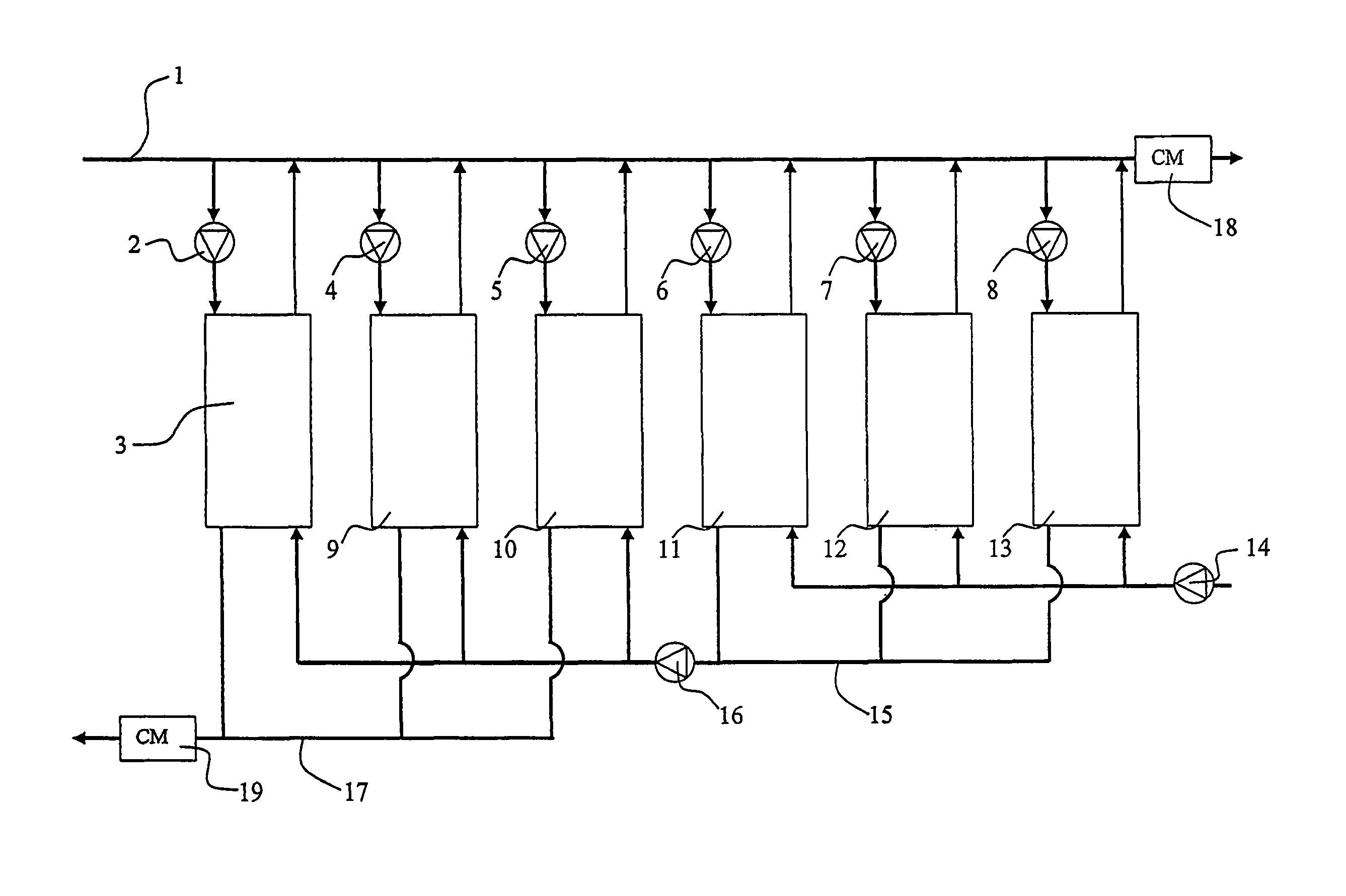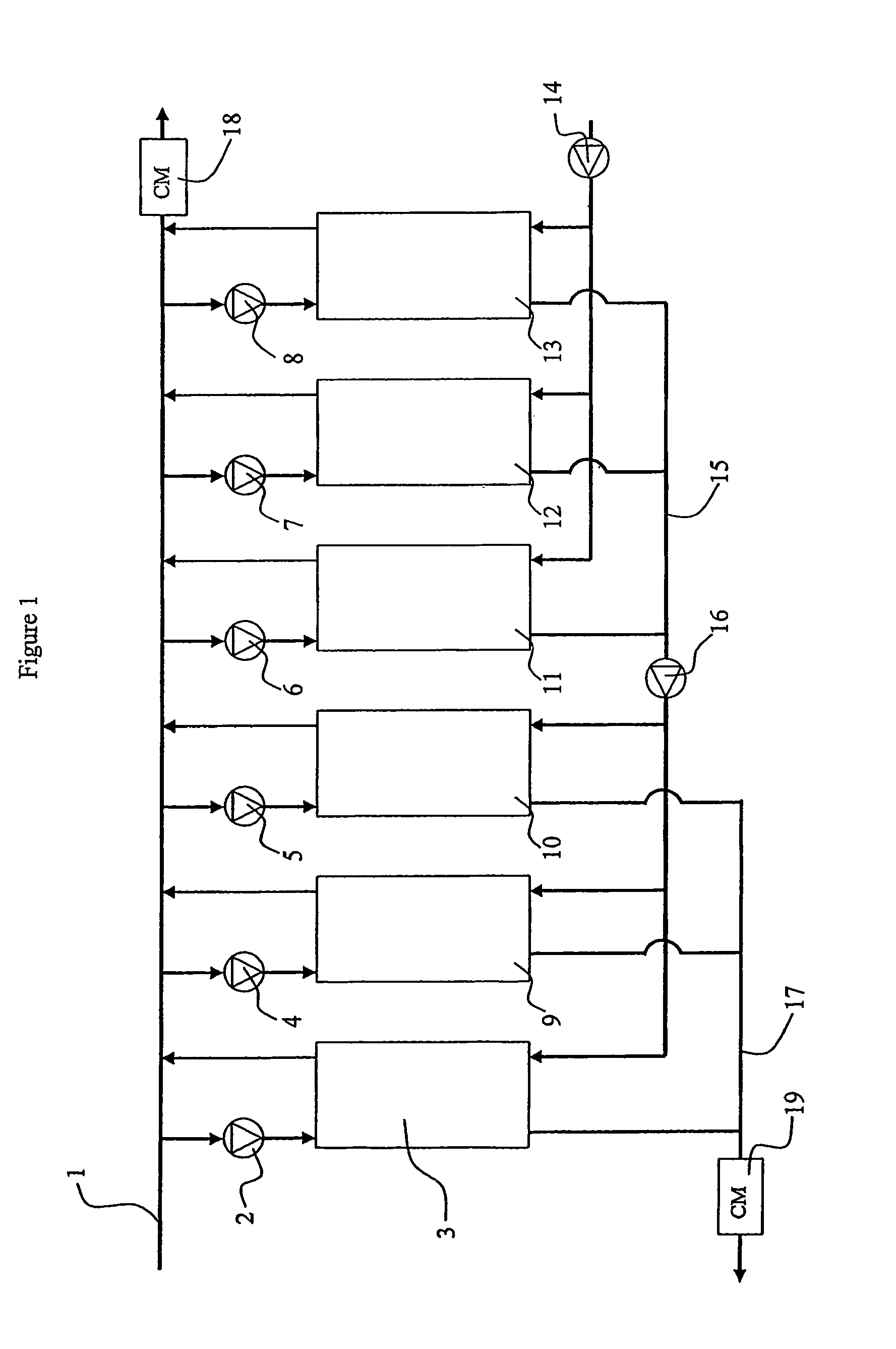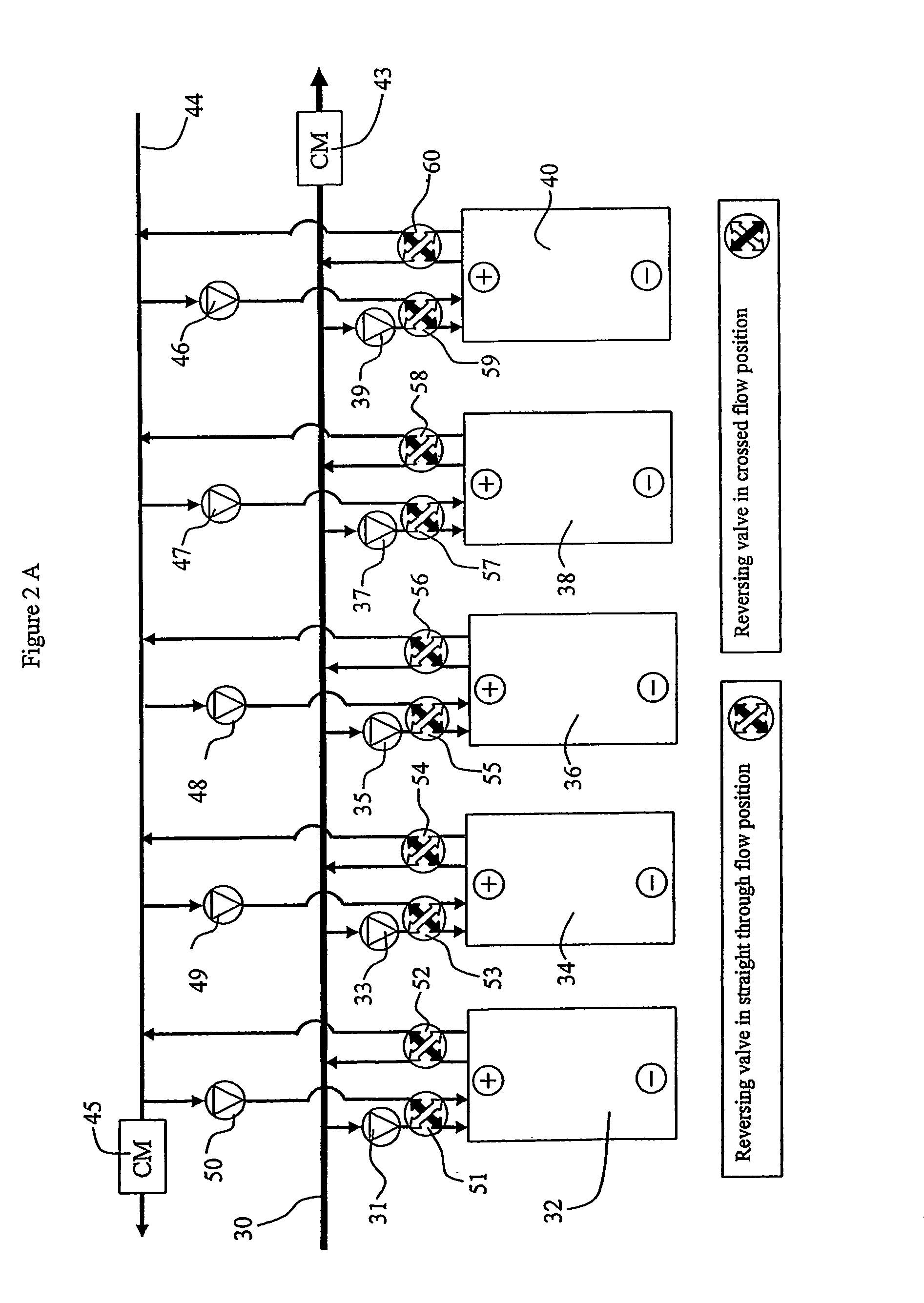Electrodialysis system and process
a technology of electrodialysis and electrodialysis system, applied in the field of improved electrodialysis (ed) apparatus, can solve the problems of limited ability to remove, limited utility of electrodialysis, both filled and unfilled varieties, etc., to improve the match of electrical conductivity, reduce the incidence of extreme voltage disparities, and the effect of closer matching of mineral burdens
- Summary
- Abstract
- Description
- Claims
- Application Information
AI Technical Summary
Benefits of technology
Problems solved by technology
Method used
Image
Examples
Embodiment Construction
[0042]FIG. 1 shows one embodiment of a system in accordance with the invention.
[0043]The system includes a number of demineralizing units 3, 9, 10, 11, 12 and 13, such as electrodialsis or electrodeionization units, that each receive a feed from a stream of fluid to be treated, e.g., demineralized, in a process feed line 1. The units return an at least partially demineralized flow to the process feed line, as illustrated by the flow connections at the upper end of each unit in FIG. 1. Each unit requires a flow of concentrate, which it receives via conduits and ports as shown in FIG. 1 at the lower end of each unit, to carry off the salts, small molecules or other material removed from the feed fluid The terms “upper” and “lower” here simply refer to the drawings, and imply no limitation on the geometry or orientations of the units themselves, their ports or plumbing connections, which may vary. Within each unit, dilute and concentrate flow cells are arranged to capture ions from the...
PUM
| Property | Measurement | Unit |
|---|---|---|
| current densities | aaaaa | aaaaa |
| current densities | aaaaa | aaaaa |
| current density | aaaaa | aaaaa |
Abstract
Description
Claims
Application Information
 Login to View More
Login to View More - R&D
- Intellectual Property
- Life Sciences
- Materials
- Tech Scout
- Unparalleled Data Quality
- Higher Quality Content
- 60% Fewer Hallucinations
Browse by: Latest US Patents, China's latest patents, Technical Efficacy Thesaurus, Application Domain, Technology Topic, Popular Technical Reports.
© 2025 PatSnap. All rights reserved.Legal|Privacy policy|Modern Slavery Act Transparency Statement|Sitemap|About US| Contact US: help@patsnap.com



